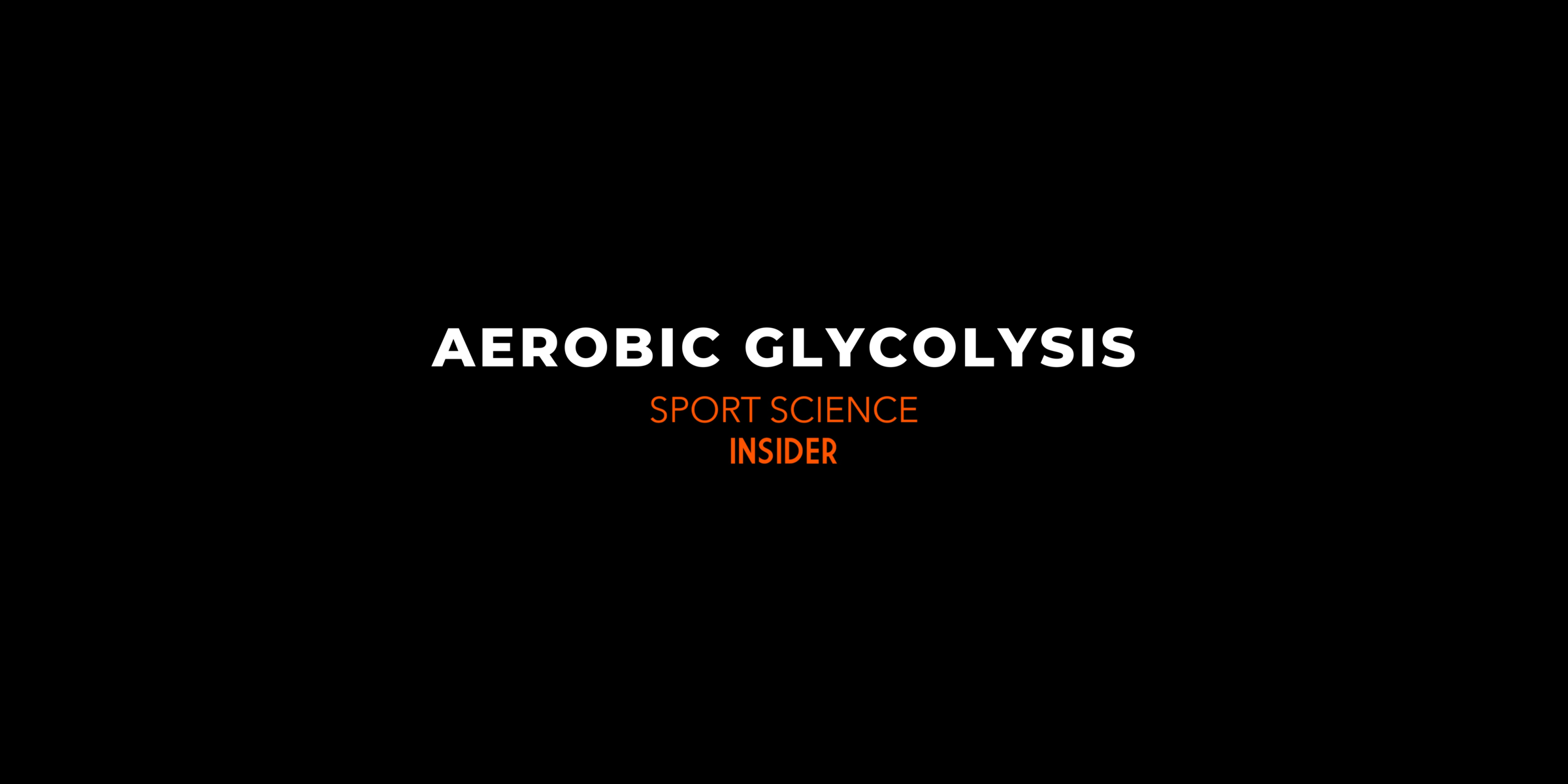Energy systems like aerobic glycolysis underpin a huge range of sport and fitness activities. In this article we’ll define aerobic glycolosis, explain the steps, explain aerorbic and anaerobic forms of glycolosis and give some sporting examples.
What is aerobic glycolysis?
Aerobic glycolysis is part of a cellular respiration process in which organisms break down glucose from food, especially carbohydrates, to create Adenosine Tri- Phosphate (ATP), a usable form of energy.
What are the steps of aerobic glycolysis?
Fair warning, as a coach or athlete, this section may be a little outside your comfort zone.
Glycolysis is a 10 step process, and each step is complex, so I’m going to give you the TLDR summary of each (If you want the full description of each step, here’s a link to a great biochemistry paper).
- Glucose enters body and is immediately converted into glucose-6-phosphate for storage
- Glucose-6-phosphate (aldose) is isomerized to fructose-6-phosphate
- Fructose-6-phosphate is phosphorylated to fructose-1, 6-bisphosphate
- Cleavage of fructose-1, 6-bisphosphate results in the formation of dihydroxyacetone phosphate (DHAP) and glyceraldehyde-3-phosphate (G3P)
- Interconversion of DHAP and glyceraldehyde-3-phosphate creates two molecules of glyceraldehyde-3-phosphate
- Oxidation of glyceraldehyde-3-phosphate and synthesis of 1, 3-bisphosphoglycerate
- Formation of 3-phosphoglycerate from 1,3-bisphosphoglycerate
- Reaction in which 3-phosphoglycerate becomes 2-phosphoglycerate
- 2-phosphoglycerate is converted to phosphoenolpyruvate
- Conversion of phosphoenolpyruvate to pyruvate
On its own, glycolysis only results in the creation of 2 ATP molecules per molecule of glycogen, however…
In the presence of oxygen, this pyruvate can then be further converted into a substance called ‘acetyl coenzyme A,’ which can then be further synthesized through the Krebs cycle and Electron Transport Chain to create an additional 36 molecules of ATP per molecule of glucose.
All of which works to collectively generate 38 total molecules of ATP per molecule of glucose in oxygenated conditions.
Now, unless you’re a physiologist or biochemist you probably have a look of visible confusion going on right now! Don’t worry, we’ll talk more about the practical, applied implications of this later.
Can glycolysis be aerobic and anaerobic?
Glycolysis can be both aerobic and anaerobic, i.e it can take place both with and without oxygen. The degree to which each pathway is called upon depends upon both the intensity and duration of exercise performed.
What is the difference between aerobic and anaerobic glycolysis?
Fundamentally there are two major differences between aerobic and anaerobic glycolysis.
1. The presence, or lack, of oxygen
Glycolysis via aerobic glycolysis occurs when oxygen and hydrogen atoms bond together to break down glucose, and facilitate an exchange of energy. Anaerobic glycolysis, on the other hand, occurs when glucose is broken down without the presence of oxygen.
2. The by-products created
The by-products of aerobic glycolysis are carbon dioxide and water, whereas the primary by-product of anaerobic glycolysis is lactic acid.
This means that aerobic glycolysis doesn’t produce lactate, so from a practical fitness training standpoint it is simply far less painful. Anaerobic glycolysis and the buildup of lactic acid is painful, which makes it self limiting, as eventually the athlete will no longer be able to tolerate the burning sensation, or the muscle itself will stop functioning properly.
3. The Amount of ATP Produced
The third major difference is that anaerobic glycolysis produces a very small amount of ATP, yielding only 2 ATP per molecule of glucose, whereas aerobic glycolysis produces far more ATP, yielding 38 ATP per molecule of glucose. This makes aerobic glycolysis a far more efficient energy pathway.
Sport examples of aerobic glycolysis
Since aerobic glycolysis is such an efficient energy pathway, it is used in a huge variety of sports and activities.
Most team sports like football, basketball, netball and rugby will heavily use aerobic glycolysis.
As will many individual sports such as middle to longer distance running, swimming and cycling, as well as sports like tennis.
It’s not a perfect rule, but generally speaking if the activity requires sub-maximal effort lasting for longer than 3 minutes, aerobic glycolysis will very likely be used as an energy pathway.
Aerobic Glycolysis can operate alongside other energy systems
It’s worth noting that many sports and activities will actually utilise multiple energy systems to varying extents.
If we take football as an example, players will be predominantly using the aerobic glycolysis pathway as they jog up and down the pitch from position to position. However, in crucial moments they will sprint approximately 30m either with, or to, the ball. In these moments the creatine phosphate system will likely increase it’s activity. Similarly, there will be chaotic moments in which players will have to repeatedly sprint, or sustain high levels of output, so the anaerobic glycolysis pathway will increase its activity.
How can we use this information as sport scientists and coaches?
For the most part, knowing this information isn’t going to impact your day to day or even week to week decision making as a coach or sport scientist.
However, having this understanding of physiology can help us in two major ways…
1. Programme and Session Design
Understanding which energy system is likely to be dominant at certain times within certain sports can allow us to craft better, more effective training programmes.
This also allows us to work with athletes to target specific weak points in their conditioning, using their training time and recovery resources more appropriately.
2. Nonsense Detection
As a coach within the sport and fitness profession, you’ll be exposed to a LOT of ideas, some good, some bad. Having an understanding of underpinning exercise physiology allows you to better distinguish the two, and to have belief in your own methods, even when they go against established traditions.
If we use boxing as an example, many traditional coaches will recommend athletes perform long distance cardio multiple times per week, i.e. 30 to 45 minutes runs. However, as a sports scientist or strength and conditioning coach, you could look at the sport and say pretty confidently that based on the physiology, a more specific interval based approach would likely generate far better results.
Of course that’s just one example, but you get the idea.
Next Steps
- If you’ve enjoyed the article, we’ve also written similar physiology based guides looking at cardiovascular fitness, as well as at lactic acid build up.
- If you have any questions, comments, or suggestions for future content, feel free to let us know below.
Further Reading
- Naifeh et al (2021) – Biochemistry, Aerobic Glycolysis.
- PT Direct (2021) – The Aerobic System.
Reference
If you quote information from this page in your work, then the reference for this page is:
Parry, A (2021). Aerobic glycolysis explained. Available from: https://sportscienceinsider.com/aerobic-glycolysis-explained/. [Accessed dd/mm/yyyy].

Alex Parry
Alex is the Owner and Head Coach of Character Strength & Conditioning, and specialises in strength & power development for athletes.
He currently works as a Tutor & Educator for British Weightlifting, and has previously delivered S&C support to gymnastics and swimming talent pathways.
